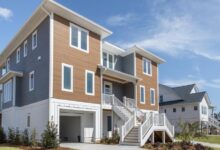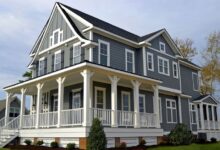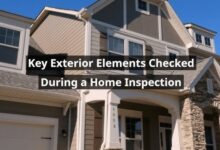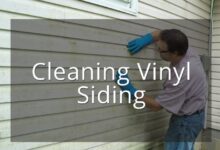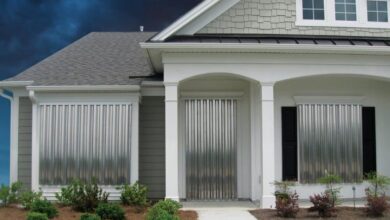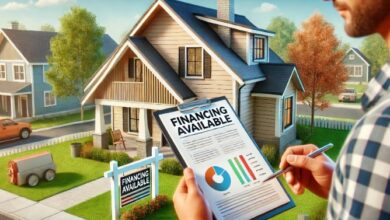When it comes to upgrading your home, selecting energy-efficient siding options is a smart way to save on energy bills while improving curb appeal. In this guide, we will explore the top energy-efficient siding options for your home, explain the benefits of each, and offer detailed insights into product recommendations.
What Are Energy-Efficient Siding Options?
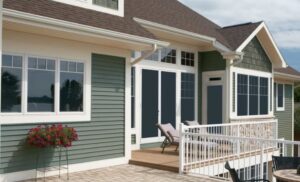
Energy-efficient siding refers to materials used for exterior cladding that are designed to improve insulation, reducing heat loss during the winter and keeping your home cool in the summer. This not only enhances the comfort of your home but also helps in lowering your heating and cooling costs.
Siding materials with built-in insulation or thermal barriers can significantly improve a home’s energy efficiency. Whether you’re building a new home or remodeling an existing one, energy-efficient siding is a long-term investment that pays off.
Benefits of Energy-Efficient Siding
Upgrading to energy-efficient siding offers a variety of advantages for homeowners. Below are some of the top benefits:
1. Lower Energy Bills
One of the most immediate benefits of energy-efficient siding is the reduction in energy costs. By providing better insulation, energy-efficient siding helps to maintain a stable indoor temperature, reducing the need for heating and cooling systems to work as hard. This can result in significant savings on your monthly utility bills, especially in extreme climates.
2. Enhanced Comfort
Energy-efficient siding can create a more comfortable living environment by minimizing drafts, cold spots, and heat loss. Whether it’s summer or winter, your home will stay at a consistent, comfortable temperature, reducing the strain on your HVAC system. You’ll enjoy better comfort year-round with more controlled indoor conditions.
3. Reduced Environmental Impact
As energy-efficient siding helps to reduce energy consumption, it also reduces your carbon footprint. Using less energy means fewer greenhouse gases are emitted from power plants. If you’re looking to make an environmentally-conscious decision, energy-efficient siding can contribute to a more sustainable home.
4. Improved Insulation
Many energy-efficient siding materials come with built-in insulation, providing an additional layer of protection against heat transfer. This makes it harder for air to escape in the winter and for hot air to enter during the summer. Insulation also helps to reduce the impact of outside noise, creating a quieter home environment.
5. Increased Home Value
Homes that are energy-efficient often see a higher resale value, as modern buyers increasingly prioritize sustainability and cost-saving features. Upgrading to energy-efficient siding can make your home more appealing to potential buyers and set it apart in a competitive real estate market.
6. Durability and Long-Lasting Performance
Many energy-efficient siding options, like fiber cement or insulated vinyl, are highly durable and resistant to weathering, pests, and fading. This means that your siding will not only keep your home energy-efficient but also last longer, saving you money on repairs and replacements in the long run.
7. Aesthetic Appeal
Energy-efficient siding can enhance the appearance of your home, giving it a fresh, modern look. Whether you prefer the look of wood, stone, or contemporary styles, there are many siding options that combine aesthetics with functionality. Energy-efficient siding can boost your home’s curb appeal and leave a lasting impression on guests and potential buyers.
8. Tax Incentives and Rebates
In some areas, upgrading to energy-efficient siding may qualify you for tax incentives, rebates, or other government incentives aimed at encouraging eco-friendly home improvements. These incentives can help offset the initial cost of installation, making it an even more affordable option.
9. Reduced Maintenance Needs
High-quality energy-efficient siding is typically designed to withstand the elements for a long period. Some options are low-maintenance or even maintenance-free, saving you time, effort, and money in the long term. For instance, fiber cement siding requires minimal upkeep compared to traditional wood siding, which might need frequent painting or sealing.
10. Protection Against Weather Extremes
Energy-efficient siding options are often designed to be more resilient against extreme weather conditions such as high winds, hail, and even fire. This added layer of protection helps maintain the structural integrity of your home, especially if you live in areas prone to such weather events.
Top 5 Energy-Efficient Siding Options for 2025
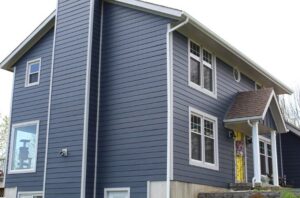
Here are five of the best energy-efficient siding options available today:
1. James Hardie® Fiber Cement Siding
James Hardie® Fiber Cement Siding is one of the most well-known and reliable energy-efficient options. Made from a blend of cement, sand, and cellulose fibers, it provides superior durability and thermal performance.
Pros:
- Highly durable against weather conditions
- Can mimic the look of wood, brick, or stone
- Great insulation properties
Cons:
- Heavy to install
- Requires periodic maintenance to prevent water damage
Price: $6 to $12 per square foot
Features:
- Fire-resistant
- Pest-resistant
- Energy-efficient
2. LP SmartSide® Engineered Wood Siding
LP SmartSide® engineered wood siding is a popular choice for homeowners seeking an eco-friendly, energy-efficient material. It is made from renewable wood resources and provides excellent thermal insulation.
Pros:
- Environmentally friendly
- Can be painted in a variety of colors
- Easier to install than fiber cement
Cons:
- Not as durable as fiber cement
- Needs periodic touch-ups
Price: $4 to $8 per square foot
Features:
- 50-year warranty
- Moisture-resistant
- Energy-efficient
3. CertainTeed® Cedar Impressions® Vinyl Siding
CertainTeed® Cedar Impressions® vinyl siding gives the appearance of natural cedar wood while offering superior insulation properties. It’s a great option for energy efficiency without the high cost of wood.
Pros:
- Low maintenance
- Energy-efficient insulation layer
- Variety of colors and textures
Cons:
- Can be damaged by extreme weather
- Less customizable compared to wood
Price: $3 to $7 per square foot
Features:
- Wind-resistant
- UV-resistant
- Insulated for energy savings
4. Mastic® by Ply Gem® Quest® Vinyl Siding
Mastic® by Ply Gem® is an affordable vinyl siding option that incorporates an insulation layer for added energy efficiency. It is designed to stand up to harsh weather conditions and provides a seamless look.
Pros:
- Affordable
- Good insulation properties
- Easy to maintain
Cons:
- Less durable than fiber cement or wood
- Limited color options
Price: $2 to $6 per square foot
Features:
- 10- to 50-year warranty
- Insulated for better thermal performance
- Fade-resistant
5. Royal® Estate® Insulated Vinyl Siding
Royal® Estate® offers a premium line of insulated vinyl siding that provides excellent thermal performance and a modern look. It helps to maintain a comfortable indoor climate year-round.
Pros:
- Excellent insulation properties
- High durability
- Variety of finishes
Cons:
- More expensive than basic vinyl options
- Color options are limited
Price: $5 to $10 per square foot
Features:
- Enhanced insulation layer
- Color retention technology
- Increased energy efficiency
Comparison Table: Energy-Efficient Siding Options

| Product | Use Case | Pros | Cons | Price | Features |
|---|---|---|---|---|---|
| James Hardie® Fiber Cement | High durability and insulation | Durable, fire-resistant | Heavy installation, maintenance | $6 to $12/sq ft | Fire-resistant, energy-efficient |
| LP SmartSide® Engineered Wood | Eco-friendly, thermal performance | Renewable resources, easy to install | Needs maintenance | $4 to $8/sq ft | Moisture-resistant, 50-year warranty |
| CertainTeed® Cedar Impressions® | Aesthetic appeal with insulation | Low maintenance, energy-efficient | Can be damaged by weather | $3 to $7/sq ft | UV-resistant, insulated |
| Mastic® by Ply Gem® Quest® | Budget-friendly energy-efficient siding | Affordable, easy to maintain | Less durable, limited colors | $2 to $6/sq ft | Fade-resistant, insulated |
| Royal® Estate® Insulated Vinyl | Premium insulation and appearance | Excellent insulation, high durability | Expensive, limited colors | $5 to $10/sq ft | Color retention, energy efficient |
Why Choose Energy-Efficient Siding?
Choosing energy-efficient siding for your home can drastically reduce your monthly energy costs. By improving your home’s insulation, energy-efficient siding helps keep your heating and cooling systems from working too hard. This results in lower energy bills, enhanced comfort, and a more environmentally-friendly home.
How to Buy Energy-Efficient Siding
You can purchase energy-efficient siding products through various online retailers, or you can consult with a local contractor for installation. Check manufacturer websites for discounts, promotions, and installation guides. Some brands offer direct online purchasing options, allowing you to buy the siding and schedule installation directly through their platform.
Here are some options for buying these products online:
- James Hardie® Fiber Cement Siding
- LP SmartSide® Engineered Wood Siding
- CertainTeed® Cedar Impressions® Vinyl Siding
- Mastic® by Ply Gem® Quest® Vinyl Siding
- Royal® Estate® Insulated Vinyl Siding
FAQ
- What is the best siding material for energy efficiency?
Fiber cement and insulated vinyl siding are both excellent choices for energy efficiency due to their superior insulation properties. - How much does energy-efficient siding cost?
The price varies between $2 to $12 per square foot depending on the material and brand you choose. - Is energy-efficient siding worth the investment?
Yes! The savings in energy bills and increased home value typically outweigh the initial investment in high-quality siding. - Can I install energy-efficient siding myself?
While some siding materials like vinyl can be easier to install, it’s always recommended to hire a professional for optimal results and long-term durability. - Where can I buy energy-efficient siding?
You can purchase energy-efficient siding from manufacturer websites, local retailers, or specialized online home improvement stores.
Conclusion
Choosing the right energy-efficient siding for your home is a step toward better comfort, lower energy bills, and a more sustainable lifestyle. Whether you opt for James Hardie® Fiber Cement or LP SmartSide®, you’ll find that the benefits far outweigh the costs in the long run. For more information and to make a purchase, visit the respective product websites and start transforming your home today!
